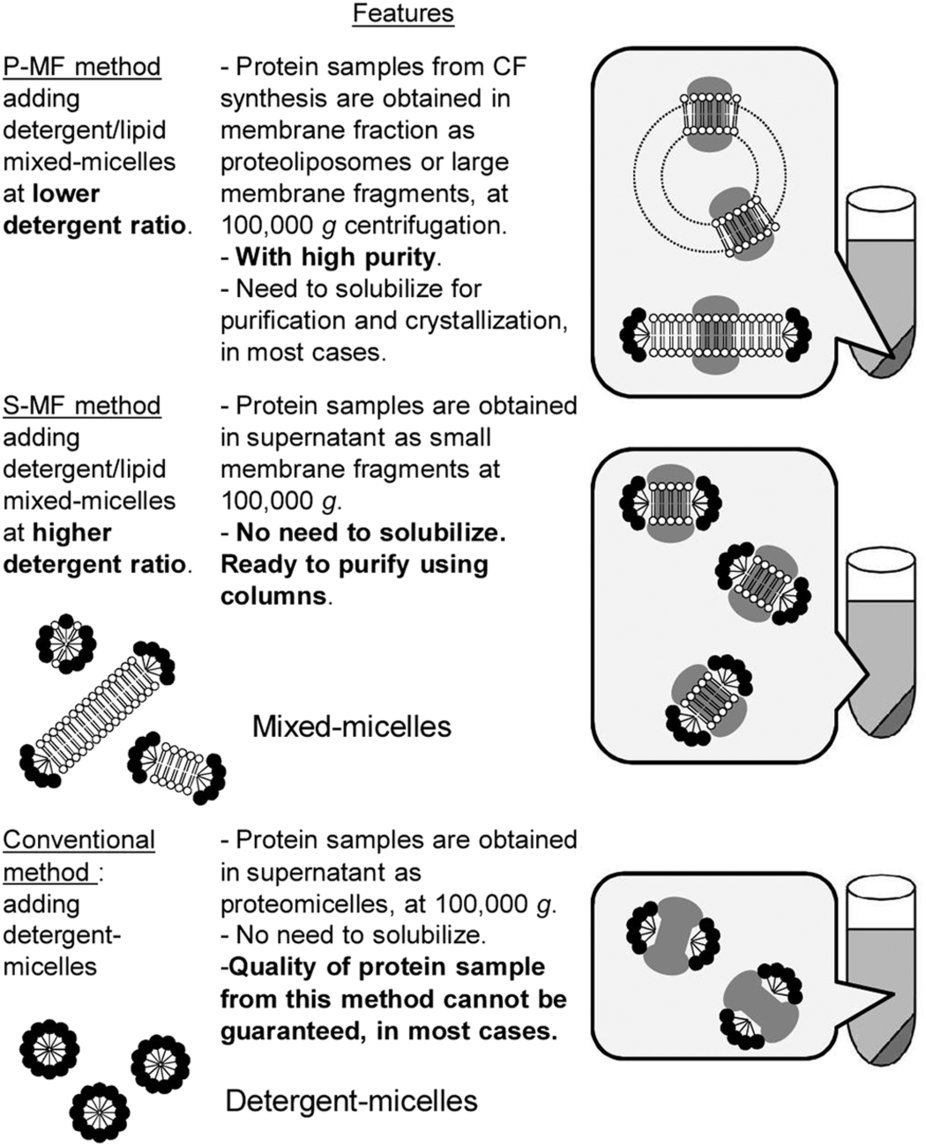細胞を使わないで自然な状態に近い哺乳類膜タンパク質を作製する方法
Cell-free methods to produce structurally intact mammalian membrane proteins
2016年7月28日 Scientific Reports 6 : 30442 doi: 10.1038/srep30442

無細胞タンパク質合成方法によって作製された試料を用いて、これまでに、細菌あるいは単細胞藻類に由来する4つの膜タンパク質の結晶構造が解明されている。本研究では、哺乳類膜タンパク質を作製するために、大腸菌無細胞タンパク質合成方法を応用して、沈殿性膜断片法と可溶性膜断片法という方法を確立した。大腸菌(Escherichia coli)無細胞タンパク質合成系で膜タンパク質を合成する際に、大きな膜断片の存在下で行う方法を沈殿性膜断片法、小さな膜断片の存在下で行う方法を可溶性膜断片法とした。両方法ともに、膜タンパク質は合成と同時に脂質環境に組み込まれる。この沈殿性膜断片法を用いて、ヒトのクローディン群、グルコシルセラミド合成酵素、γセクレターゼのサブユニット群など、さまざまな哺乳類膜タンパク質を作製した。初期条件下において、これらのタンパク質は、1 mlの無細胞タンパク質合成反応液あたり約0.1~1.0 mgのレベルで作製され、超遠心分離で沈殿として得られた。可溶性膜断片法では、より大量の膜タンパク質が作製出来、超遠心分離の上清として回収され、そのまま、可溶化などの工程を経ること無く、カラムクロマトグラフィーで精製できた。一部の膜タンパク質については、特定の脂質/界面活性剤の添加など、膜断片法の条件をさらに最適化した。精製膜タンパク質の機能的および構造的な完全性は、そのリガンド結合活性、サイズ排除クロマトグラフィーのプロファイルおよび/あるいは熱安定性の解析によって確認した。我々は、ヒトクローディン-4とエンテロトキシンの複合体の高品質結晶を得ることによっても、均質で高収量な膜タンパク質試料の調製に成功していることを確認した。

